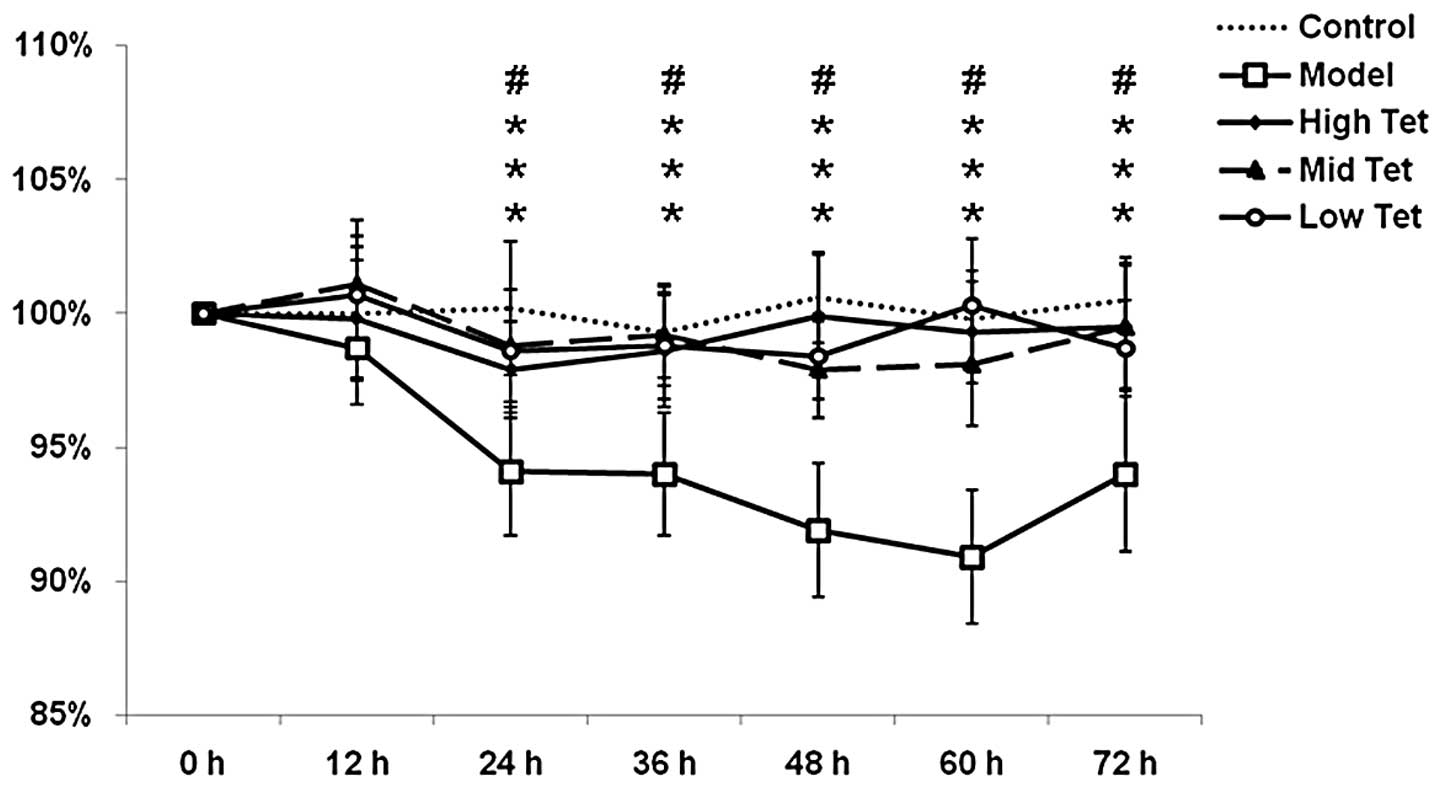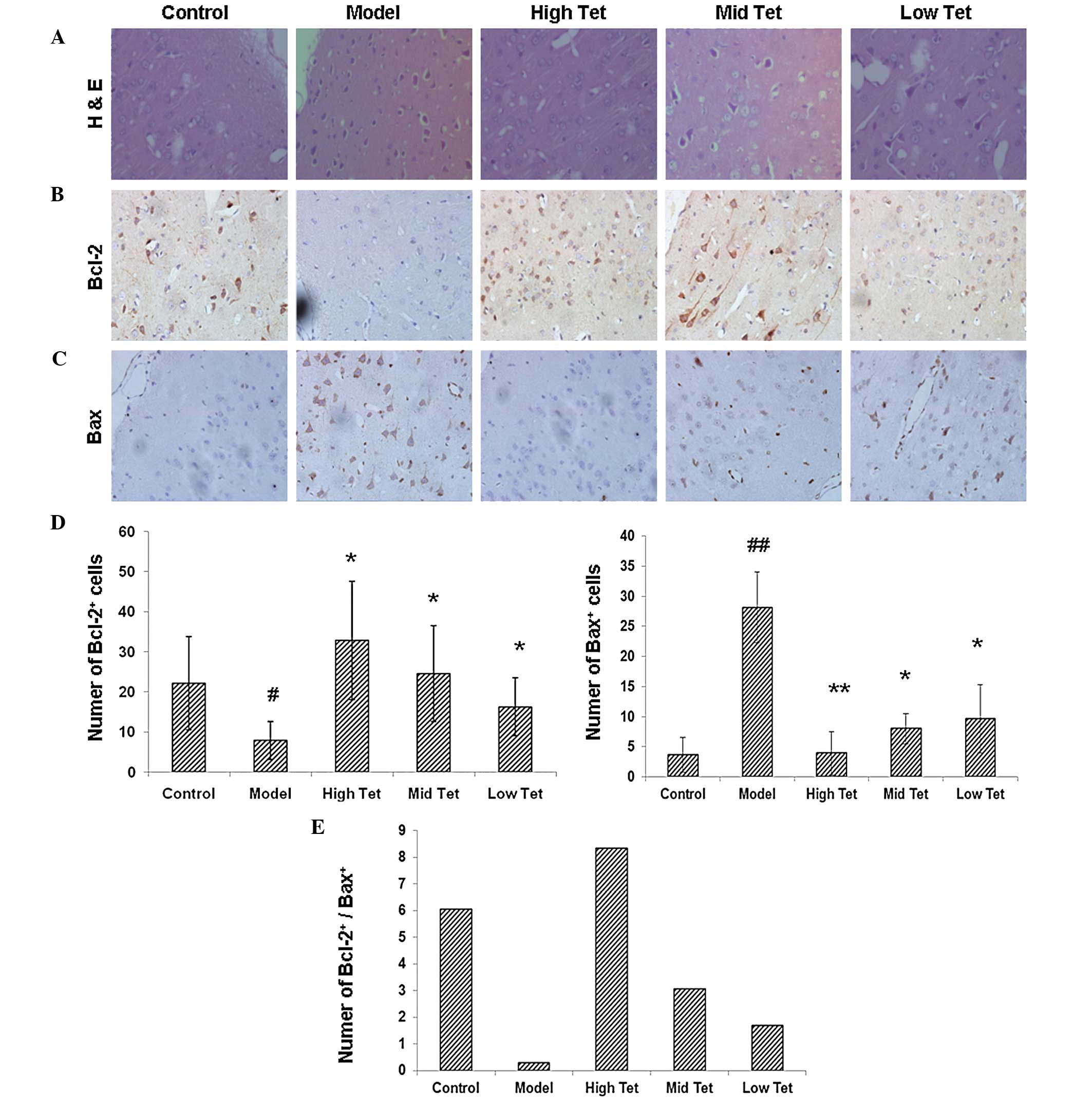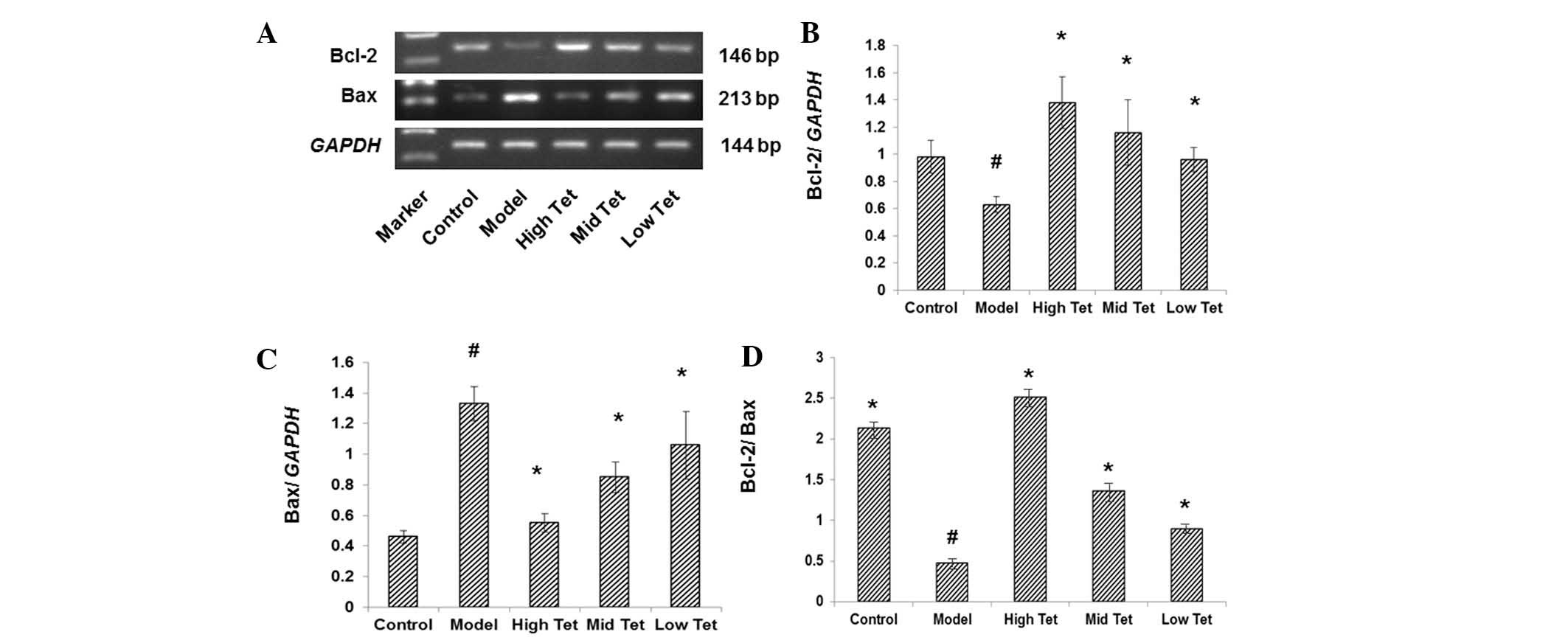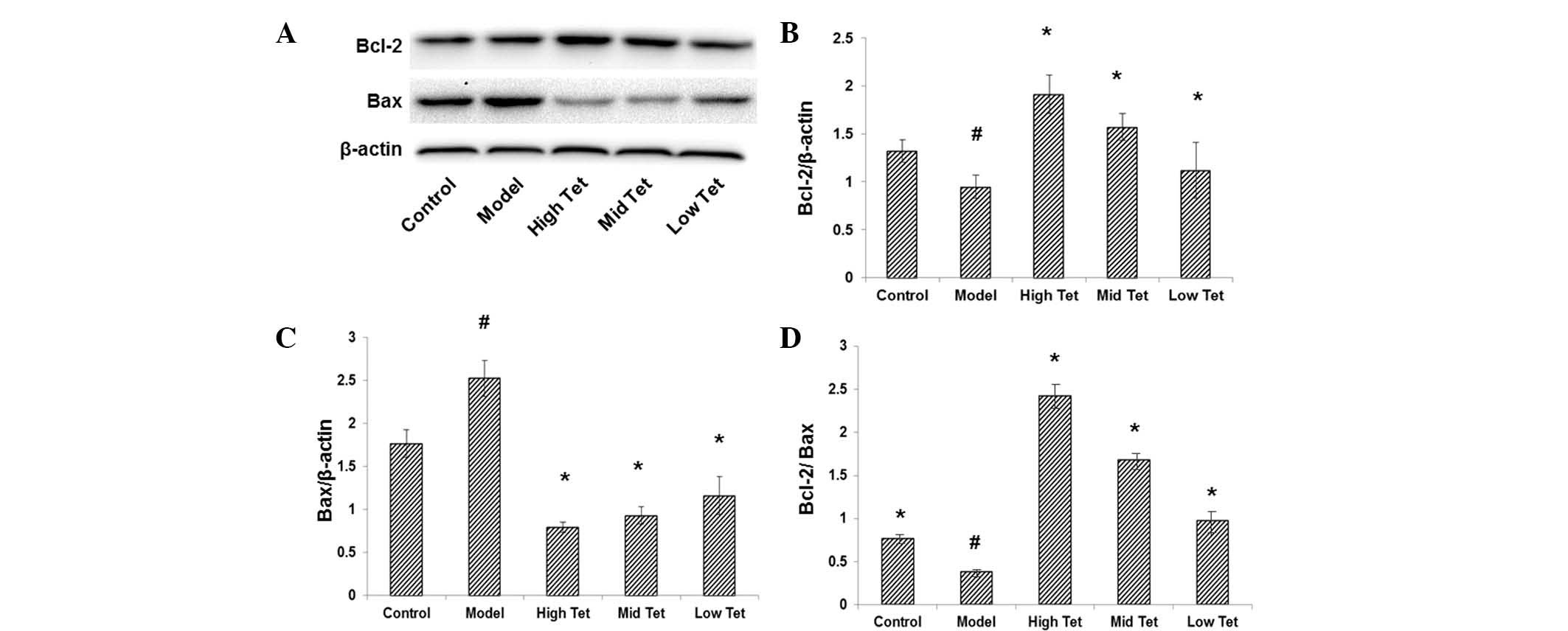Protective effects of tetrandrine on brain cells in phenobarbital-dependent and -withdrawn rats
- Authors:
- Published online on: November 25, 2014 https://doi.org/10.3892/mmr.2014.2997
- Pages: 1939-1944
Metrics: Total
Views: 0 (Spandidos Publications: | PMC Statistics: )
Total PDF Downloads: 0 (Spandidos Publications: | PMC Statistics: )
Abstract
The aim of this study was to investigate the effects of tetrandrine (Tet) on the brain cells of phenobarbital‑dependant and ‑withdrawn rats, and to explore the underlying mechanisms. A total of 100 rats were randomly divided into five groups: The control group, the phenobarbital‑dependent model group, and Tet‑treated groups of low‑, mid‑ and high‑dosages. Following drug withdrawl, the morphological changes of the frontal lobe cells were examined by hematoxylin and eosin (H&E) staining. Immunohistochemical staining was applied to detect the expression of apoptosis‑related proteins Bcl‑2 and Bax. Reverse transcription‑polymerase chain reaction (RT‑PCR) and western blotting methods were applied to detect the mRNA and protein expression levels of Bcl‑2 and Bax, respectively, in the frontal lobe. The results indicated that Tet effectively reduced the withdrawal symptoms, particularly the weight loss, in phenobarbital‑dependent and ‑withdrawn rats. H&E staining revealed that Tet significantly restored the histopathological changes in the addicted rats in a dose‑dependent manner. The immunohistochemical, RT‑PCR, and western blot analyses indicated that Tet treatment significantly increased the Bcl‑2+ brain cells and the mRNA and protein expression levels of Bcl‑2, and decreased the Bax+ cells and the mRNA and protein expression levels of Bax, as well as elevated the ratio of Bcl‑2/Bax, in phenobarbital‑dependent and ‑withdrawn rats. Tet may inhibit apoptosis in these addicted rats, in a dose‑dependent manner. Tet alleviates the phenobarbital withdrawal symptoms and protects the brain cells against apoptosis, which may be a result of the regulation of the mRNA and protein expression levels of Bcl‑2 and Bax.













